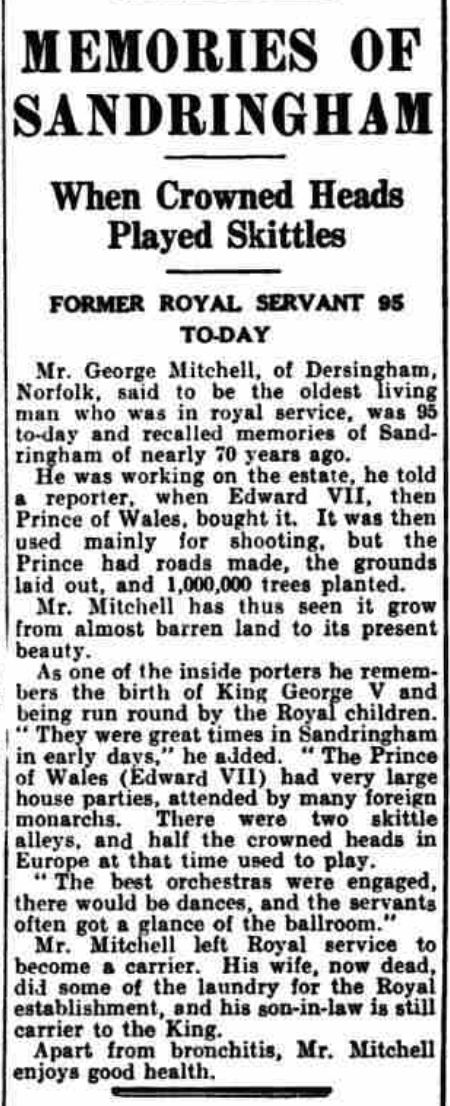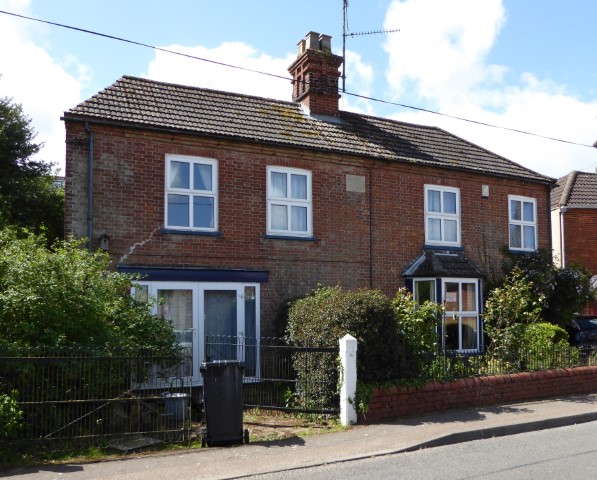The lady who donated the two photographs above kindly wrote up the history behind them for us and here it is
:of George Mitchell with and Albert Ding with his with his new wife Annie (Mary Annie) Taylor
"I am writing this to you from my home in Dundee, Scotland. My father was a Scot and my mother a lovely Englishwoman from Gateshead. I came across your site as I sought to find out about Dersingham and, hopefully, that I might be helped to identify an old man feeding cats on a photo/postcard of the early 1900s which had been in an old postcard album I inherited from my late mother, who in turn had inherited it from her mother. My mother had written on the back "Gt. Uncle Mitchell of Dersingham". I had no idea who this was, nor the connection to my family, (my mother did not know that either) though I was aware there may be relatives in the area because I had been told my Grandfather's father came from Norfolk.
When I came to the piece on Carriers (so interesting in itself to find how people lived and worked in those days) and particularly that on George Mitchell, it was so thrilling to discover I had, indeed, located "Gt. Uncle Mitchell". For Mary Ann Ding, nee Taylor, was my Grandfather's sister and "Auntie Annie" to my mother, though to the best of my knowledge my mother never met her and her family personally nor ever visited Norfolk. Hence my ignorance. As you say in your piece it was the sad event of her mother's death that took Annie to Norfolk to be brought up by her father's brother and family in Holme-by the Sea. ( Her mother Ann died aged 32 in October 1889 leaving 5 children, 3 girls and 2 boys, the eldest of whom was 8years, the youngest, a baby girl, only a few months old. This latter was taken in by her mother's sister and family who lived in Coundon, near Bishop Auckland. The 8 year old eldest daughter and the two boys remained with their father. Annie was the middle child and my grandfather, Wilfred, her younger brother.) It is a sad tale, but all too common in the nineteenth century, I believe. On top of that, the eldest brother, Edward, was killed in 1915, in WWI, leaving behind, in his case, a widow and 3 young children.
I have also attached another postcard photo from my gran's album out of interest as it is of Annie and Albert in Dersingham (on their wedding day, I am presuming.) Annie herself sent the postcard to my grandmother the week after Albert enlisted for service in WW1
Once this pandemic is over and we are free to travel again I hope to visit Norfolk and explore for myself this area which you have brought to life so vividly for me.
Again, many thanks,
Regards,
Dorothy Alexander"





.jpg)